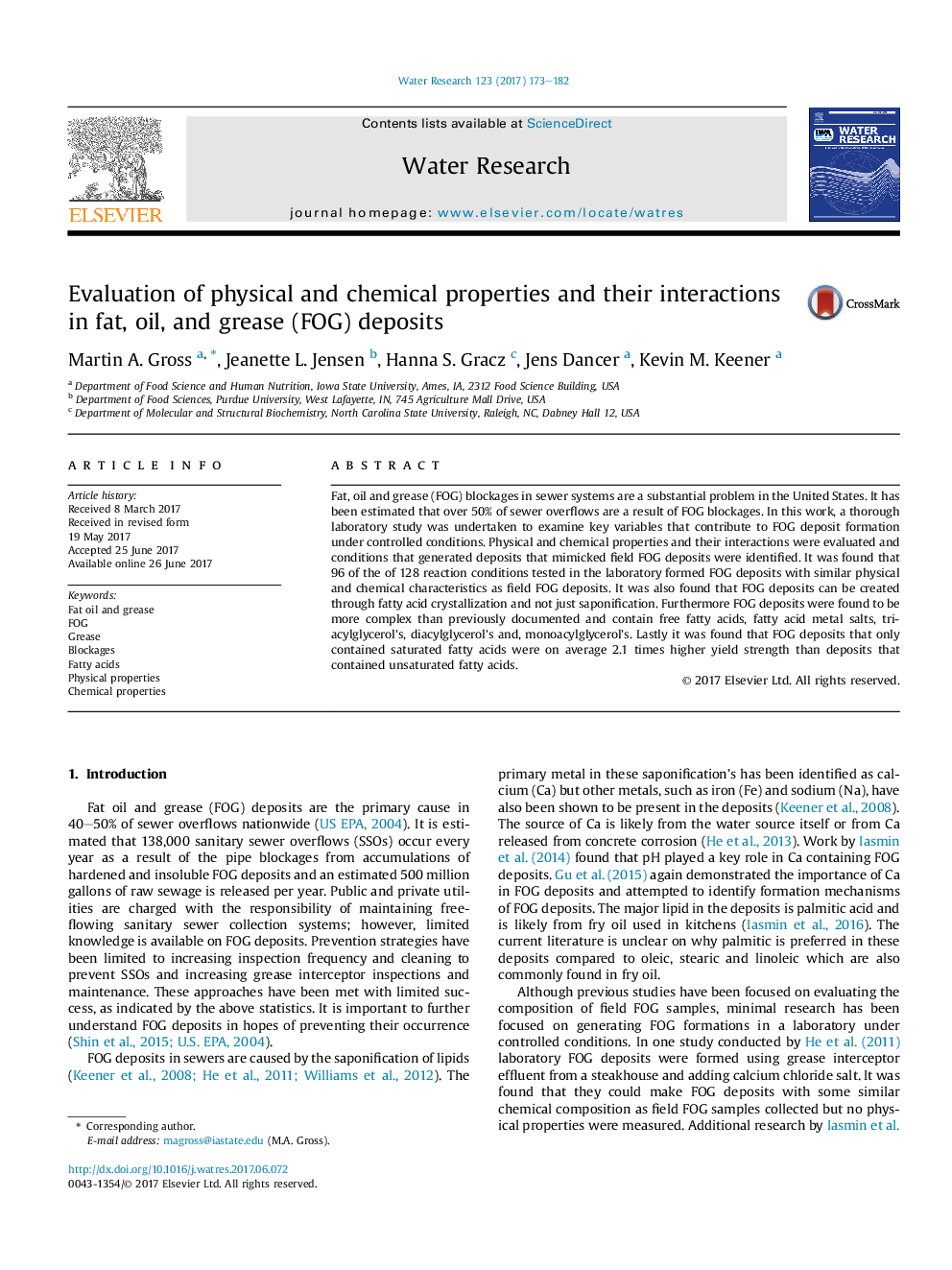| Article ID | Journal | Published Year | Pages | File Type |
|---|---|---|---|---|
| 5758850 | Water Research | 2017 | 10 Pages |
Abstract
Fat, oil and grease (FOG) blockages in sewer systems are a substantial problem in the United States. It has been estimated that over 50% of sewer overflows are a result of FOG blockages. In this work, a thorough laboratory study was undertaken to examine key variables that contribute to FOG deposit formation under controlled conditions. Physical and chemical properties and their interactions were evaluated and conditions that generated deposits that mimicked field FOG deposits were identified. It was found that 96 of the of 128 reaction conditions tested in the laboratory formed FOG deposits with similar physical and chemical characteristics as field FOG deposits. It was also found that FOG deposits can be created through fatty acid crystallization and not just saponification. Furthermore FOG deposits were found to be more complex than previously documented and contain free fatty acids, fatty acid metal salts, triacylglycerol's, diacylglycerol's and, monoacylglycerol's. Lastly it was found that FOG deposits that only contained saturated fatty acids were on average 2.1 times higher yield strength than deposits that contained unsaturated fatty acids.
Related Topics
Physical Sciences and Engineering
Earth and Planetary Sciences
Earth-Surface Processes
Authors
Martin A. Gross, Jeanette L. Jensen, Hanna S. Gracz, Jens Dancer, Kevin M. Keener,
